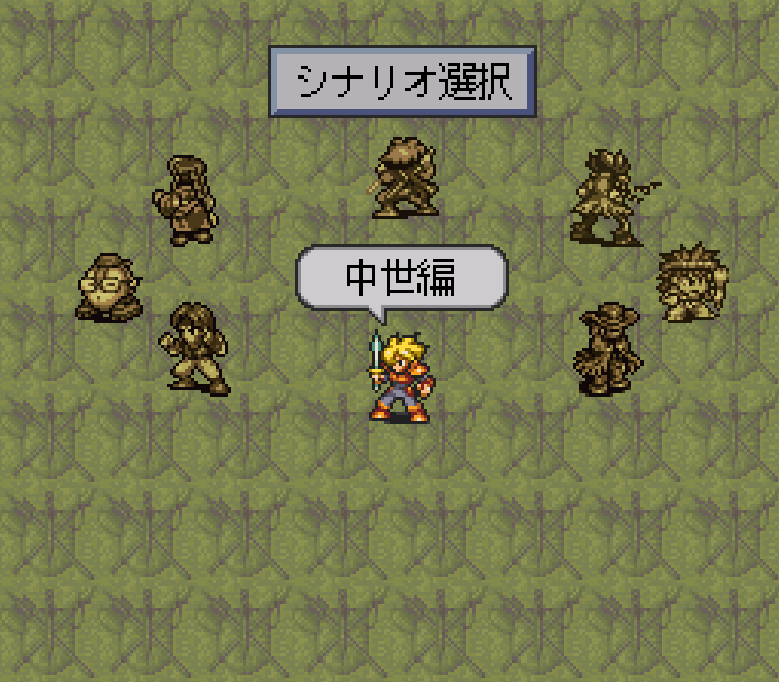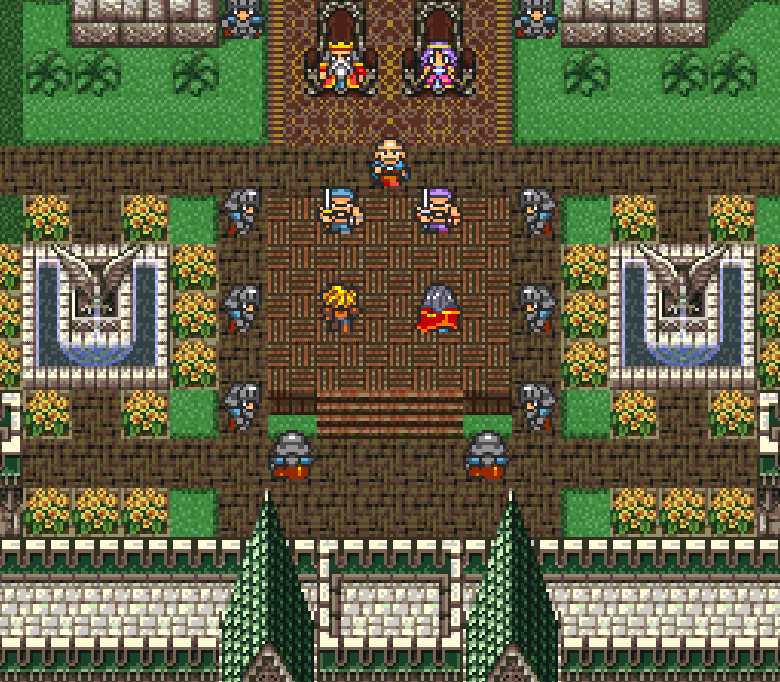
- I don't care for the rock-opera remix of the opera Shovel Knight composer virt did for OCRemix's Balance and Ruin FF6 fan album. It's a landmark achievement in terms of production values for fan remix projects, but it's not very listenable. Like, good for you that you made an FF6 track, or something kind of based on one sort of, sound like "Bohemian Rhapsody," but I put the damn thing on, and within a minute or two, I'm holding my forehead and muttering, "oh, God, just go away." It's extremely Drama Kid - involved with itself and demanding and screamingly insistent on attention, attention, attention. The singing gets gratingly whiny and increasingly histrionic about a who-cares Romeo and Juliet plot that has jack all to do with FF6; it's wrapped up in its own irrelevancies and doesn't want much to do with its source, I imagine, because it just can't bear to share the stage. By the time the lead starts screeching for a knife to stab someone - who? I don't know; the song doesn't know; I most certainly don't care - at around the five-minute mark, I'm ready to walk it out the door. My ears greatly prefer "The Nightmare Oath" (which they must have been tempted to cut given a contribution from virt; I'm so glad they didn't) and the vaporwave cool of "On the Run", a vocal remix of the Returners theme takes the source in a completely new direction but is still of a piece with it, musically and thematically.
- I don't care for the opera. Yes, it was a novelty in its day: the composition is markedly more elaborate and "mature" than its contemporaries, in that it sounds more similar to classical pieces than 16-bit leitmotifs that loop after a couple minutes, and it was neat to note, "hey, that electronic trill on the soundtrack kind of sounds like a human voice." For U.S. RPG fans, it was a big departure to advance the story in ways other than combat, through elementary hitting marks and cues and such, because our domestic market for RPGs was so precarious that the other 16-bit titles that did this more extensively and better never reached our shores. The five-minute race to prevent Ultros from shoving a Looney Tunes 10-ton weight onto Celes to stop the performance, where you have to weave your way through the maze of rafters above the stage and try to avoid fights or wrap them up ASAP, is neat. The actual pincer fight with Ultros above the orchestra pit, with the conductor joining in to score the battle, is neat.
There's a lot that's good in it! But *only* good. The scene doesn't deserve its mythic status. I think of other RPG setpieces, and the bombast is not only impressive to the senses but also bolsters the storytelling. Lunar: Eternal Blue's opening cinematic, of Lucia awakening on the Blue Star, establishes its key character and her place in Lunar's history wordlessly, demonstrating fluency in the language of cinema its predecessor did not have. FF7's raid on Reactor No. 1 used the new freedoms of 3D to play with scaling and camera angles in its environments, lending an unprecedented sense of scope and looming threat to its world and the challenges its protagonists faced. The opera, though it does feed one of FF6's themes, doesn't further its enduring, actually-worthwhile message, the one about finding a reason to live when you've lost everything; instead, it's the centerpiece of the particularly nasty version of the "give up on being a strong, independent woman and start being a fainting damsel" storyline that had moments here and there in '90s gaming (Sonya in the MK movie, Lucia herself a bit) and is impressed upon Celes so the devs can play lip service to the idea of female leads but job them in favor of putting over their real favorite, Locke - to the detriment of both characters' development, and the neglect of their core issues of dealing with previous misdeeds and projecting one's past onto others respectively. Other than shoving Celes in a helpless-princess role, the scene doesn't even have any relevance or emotional resonance for our actual cast, revolving instead around the fates of the cast of an in-game play. It could be cut entirely from the game with no loss to the story.

Through the seven chapters that form the bulk of its anthology approach to the RPG, Live A Live concerns itself with more unusual, smaller tales than the genre's usual fare: an outlaw must team up with the lawman on his tail to save a village under siege by bandits, for example, or an elderly kung-fu master must find and train a pupil before his aging body fails him. Its approach is so unusual and creative that its eighth chapter, the one that unlocks upon beating the other seven, raises eyebrows - and suspicions - by being so expected.
(SPOILERS for Oersted's chapter and late-game to endgame Live A Live, starting in earnest under the cut.)

The basic plot is so rote it's downright suspicious: in a fantasy medieval kingdom, the princess is abducted by a dragon, and the king's best knight must rescue her and save the world from the Dark Lord to claim her hand in marriage. The genre has told us for so long, however, that the real heroes are young male knights with swords that the content and placement of this medieval tale sets certain expectations: that (as with, say, Dragon Quest IV) the game is clearing the way for the real story to begin. Yeah, we've had the stage set with all these weirdo losers' piddling problems, but at long last, the real hero is here! Time for the real tale to begin! And, mm. Mmmmm. No. No, sir. That's not what happens at all.
My laptop won't start. I was out camping, and it had rained during the night, so I was paranoid that my computer had gotten in the quarter-sized drop of water that had entered the otherwise bone-dry tent when I had to open the door once for five seconds. I'm 97% sure it didn't, but I thought that 3% might have come into play until a search at a library revealed that suddenly not booting up is something my model just, for a fun variety of hardware reasons, really likes to do.
I used to have an old bento-box Lenovo with an expansive 100 MB hard drive as a backup, but it also stopped booting either on battery power or A/C months ago, and I never got a replacement. That's a problem, because I had a client who was putting up some potentially-lucrative jobs "that night," and by "that night," I mean "anytime from 12:01 p.m. to way, way past when any library closes." I needed an internet-capable machine, quickly.
Paying Walmart $200+ for its cheapest non-Chromebook wasn't exactly appetizing, but at least the expense would get me some sort of asset that I could, possibly, resell, which is more than I could say for my other option, paying $120 for a month-long rental of a laptop with questionable security measures and software. I was deliberating between these two lackluster choices when I received a call back from that savior of many desperate individuals, the pawn shop. I'd left a message asking about his stock of laptops, and he informed me he had two: an $89 Chromebook, and a longshot he was unloading for the low, low price you see in the title. So I requested: regale me of this $29 machine.


The ShopRite price tag makes the photo.
I think it's worth more than $29, personally. Well, it definitely is, as it netted me more than $29 worth of work, but it's not as hopeless as that price tag would imply. The most salient problem is the nonfunctional battery, which means it has to be plugged in at all times - but I'm always using my machine either at home or in my car, and I have a power inverter for the latter. The previous owner disassembled the casing and evidently lost most of the screws, so the right side of the case unsnaps periodically due to lack of fasteners, and the lower-left of the screen has a kitchen screw subbed in. There's minor aesthetic stuff like practically-invisible marks on the screen from the keyboard and case damage from the kitchen that don't bother me; the touchpad is, as the Post-Its note, a little too sensitive - I think it's actually broken in some minor manner; the cursor sporadically freaks out for no reason - and the specs are several years old, but it's A-OK for word processing and the Internet, and that's what I need. I was going to say, "worst case scenario, I take out the 500 GB hard drive and use it as a backup" - but I've had it for a couple weeks, and it's actually working fine. (Which is needed, because it'll take three weeks and a motherboard from overseas before my main machine is fixed.) I've even gotten it a battery and proper screws.
It even let me Prestige III my Yun-Jin before the big update patch!

I can't play the game, and Yun-Jin's hair looks like straw modeled on a PS2, but at least I got into the interface.
Page 24 of 56
